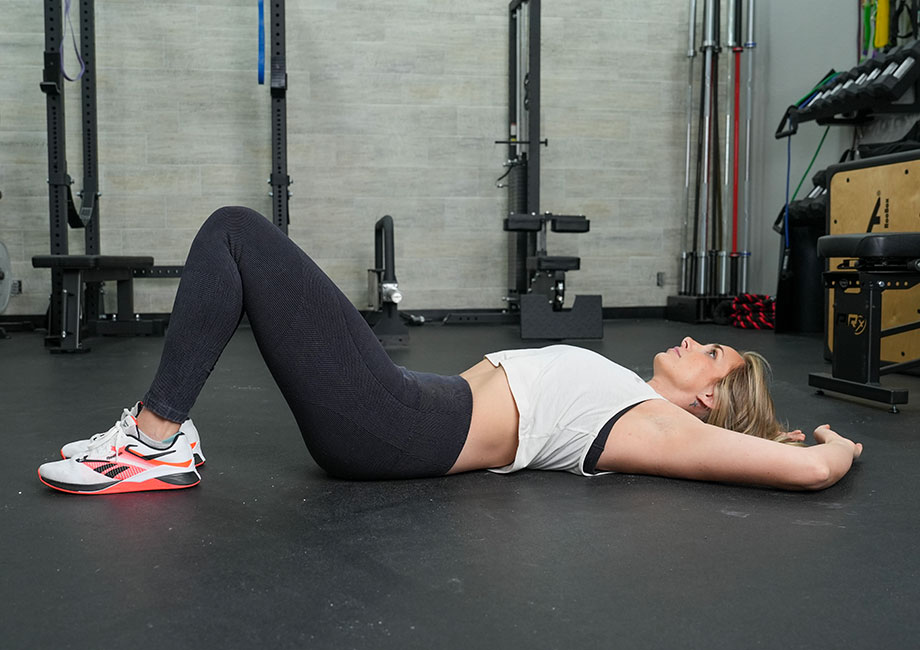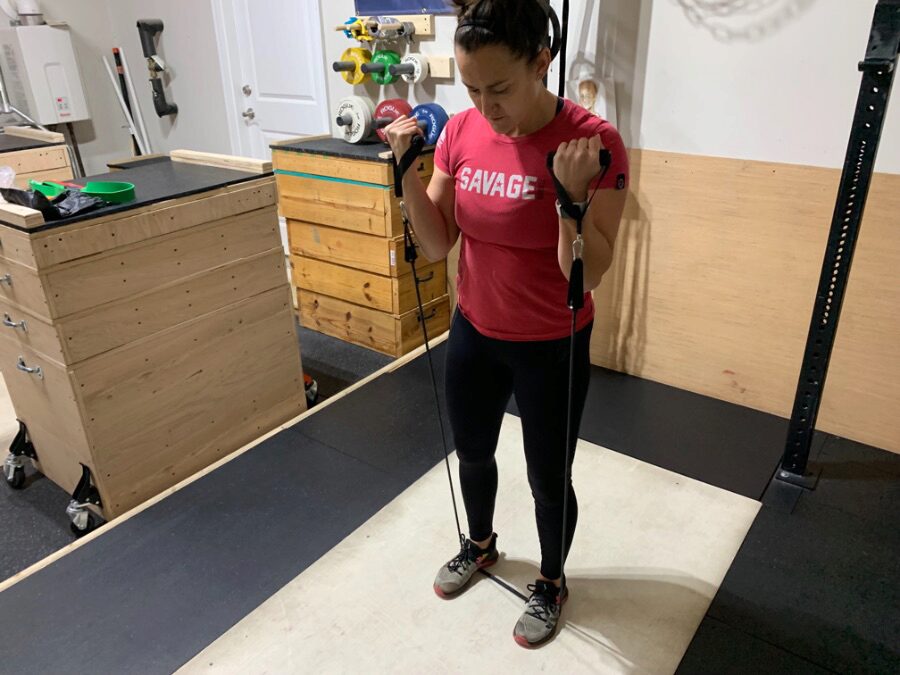If you’re landing on this guide to the best pelvic floor exercises, I’m genuinely glad you’re here. As a certified personal trainer and someone who has gone through pelvic floor therapy, I totally understand how overwhelming pelvic floor health can be. This stuff is 10 times more stressful than finding the best treadmill for a home gym or the best pre-workout without sucralose, which are the kind of articles you may be more familiar with here on Garage Gym Reviews.
However, your friends at GGR are health and fitness experts. We want to help educate you on everything related to strength and conditioning so you can be the strongest possible version of yourself and better understand your needs.
In this guide to the best pelvic floor exercises I will explain how to identify your pelvic floor muscles, how to engage them, and how to relax them. I’ll also explain why it’s important to exercise your pelvic floor and make sure you know when to talk to a healthcare provider. Let’s get started.
Medical disclaimer: This article is intended for educational and informational purposes only. It is not intended as a substitute for medical advice. For health advice, contact a licensed healthcare professional or physical therapist.
Key Takeaways
- A strong pelvic floor can improve your bladder control, bowel control, and sexual health1.
- Some of the best exercises2 to strengthen and relax the pelvic floor are Kegels, pelvic tilts and lifts, diaphragmatic breathing, and heel slides, which typically produce results in six to eight weeks.
- One of the most common pelvic floor exercises is Kegels, which involves tightening the pelvic floor muscles for three seconds and then releasing in a set of 10.
- 32% of all women3 will have at least one pelvic floor disorder in their life, while 60% of birthing women4 experience at least one postpartum.
- Pelvic floor dysfunction can happen to anyone, regardless of gender. Pelvic floor exercises are not just a women’s health issue—about 16% of men experience pelvic floor dysfunction3.
- Pelvic floor dysfunction could mean several things including leakage, constipation, pelvic pain, lower back pain, or pain during sex, to name a few.
RELATED: Weight Training for Women
Benefits of Pelvic Floor Exercises
Because your pelvic muscles essentially create a “floor” for your internal intestines, bladder, rectum, and several other internal organs, the main benefit of a strong pelvic floor is proper function in the bathroom and your sexual health.
No one likes to strain on the toilet, leak after sneezing, or not be able to control urine flow. And unfortunately, weak pelvic floor muscles lead to dysfunction in these private areas of our lives.
Pelvic floor exercises can help you develop better awareness, locate the correct muscles, and strengthen your pelvic floor. This can not only help with pelvic function, but it can play a role in the overall stability of your core muscles and potentially relieve lower back pain.
RELATED: Lower Back Exercises
Exercises to Strengthen Pelvic Floor Muscles
Some of the best pelvic floor exercises include pelvic tilts, pelvic lifts, diaphragmatic breathing, heel slides, and toe taps. And we can’t forget the classic Kegel exercise2, which is one of the best ways to identify the right muscles and develop awareness of the pelvic floor.
The Kegel Exercise Helps Identify Correct Muscles
Before we dive into the details of the Kegel, I think it’s important to note that Kegels are not the silver bullet pelvic floor exercise. Pelvic floor muscle training should include full range of motion, which means fully tightening and fully relaxing the muscles.
Think of it this way: When you do biceps curls, you’re going to go through a full range of motion starting with your arms straight and relaxed, then bending at the elbow and engaging the biceps to bring your hand toward your shoulder to finish the range of motion and contract the muscles.
Most people don’t want to train their biceps by holding the contraction at the top range of motion and not train through the eccentric portion of the curl. Similarly, for optimal pelvic health most folks will need to understand how to both contract and fully relax their pelvic floor. The Kegel exercise is a great starting point for identifying how to contract, but it may not be the best way for everyone to identify the fully relaxed feeling of the pelvic muscles.
RELATED: Best Biceps Workout
Lying Kegel Exercise
Why do it: Helps identify the muscles of your pelvic floor and allows you to strengthen them.
Identify the correct muscles by one of two methods:
- Imagine you’re trying to stop the flow of urine midstream.
- Imagine you’re trying to avoid passing gas.
The muscles you’ll use to perform either method are your pelvic floor muscles. It should feel like an upward pulling motion of your pelvic muscles (or as my pelvic floor PT used to say: invision “zipping up” a pair of jeans). Keep in mind these methods are for identifying the correct muscles, please don’t make a habit of stopping urine midstream, as it can cause urinary tract infections.
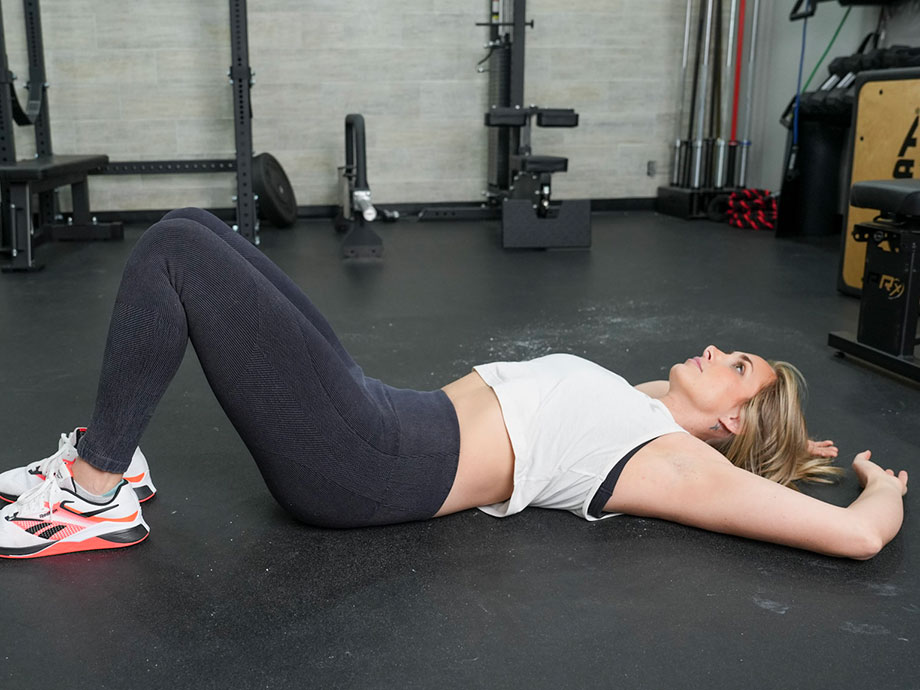
How do do a Kegel:
- You can do a Kegel in any position, but it’s best to start by lying down with your knees bent and feet flat on the floor.
- Tighten your pelvic floor muscles by imagining one of the two techniques listed above.
- Hold the contraction for 3 to 5 seconds.
- Release the hold by taking a deep breath in. Stay relaxed for another 5 to 10 seconds.
- Repeat the contraction and release for 10 repetitions.
Diaphragmatic Breathing
Why do it: To help identify pelvic floor muscles and help you practice predominantly breathing into your belly versus your chest.
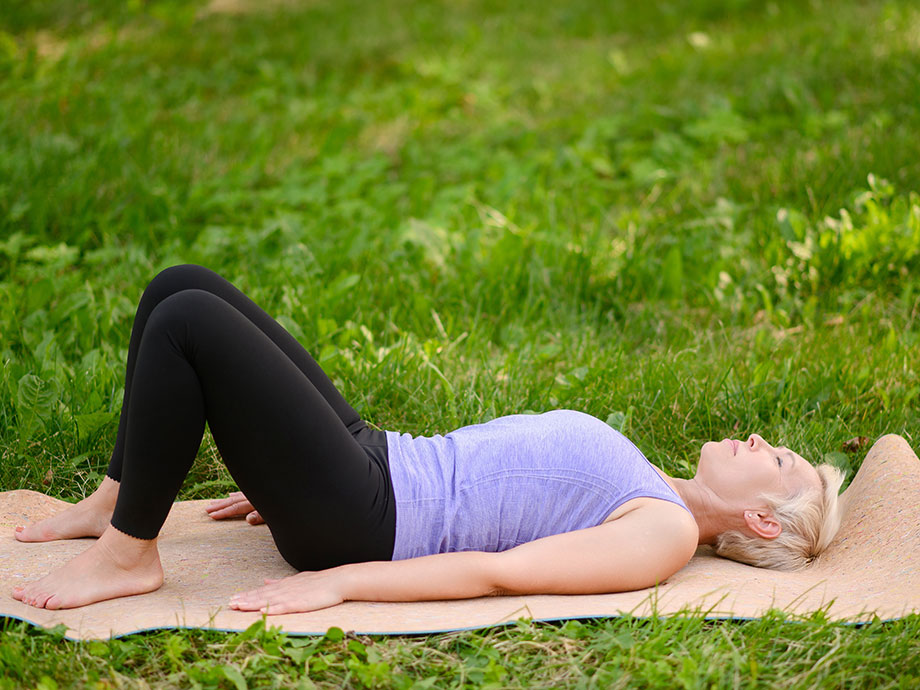
How to do it:
- Similar to the Kegel, it can be done in any position, but it’s ideal to start lying on your back with your knees bent and feet on the floor.
- To help pinpoint your breathing technique, place one hand on your sternum and the other low on your belly. Your hand is on your chest so you can recognize when you’re not belly breathing.
- Take a slow, deep breath in through your nose and let your belly rise and push into your hand. The hand on your chest should remain still.
- When you’re ready to exhale, tighten your abdominal muscles, contract your pelvic floor muscles into a Kegel, and breathe out slowly through your mouth.
- Try to breathe out all of the way, empty out all of your air, and let your belly fall inward. Your hand on your chest should remain still.
- Slowly inhale again and repeat for repetitions.
Pelvic Floor Lifts
Why do it: Pelvic floor lifts are similar to the glute bridge but are performed slower and with more intention placed on pelvic floor and abdominal muscle engagement versus the glute.
How to do it:
- Lie on your back with your knees bent and your feet flat on the floor.
- Place a small ball, foam roller, or yoga block between your knees.
- Engage your core by inhaling to fill your belly and exhale to engage the pelvic floor and abdominal muscles.
- Once your core is engaged, tighten your buttocks and lift your pelvis off the floor as you exhale.
- Inhale at top, pause, and exhale to re-engage your pelvic floor muscles.
- Slowly lower back down and repeat slowly for reps.
RELATED: Best Glute Exercises at Home
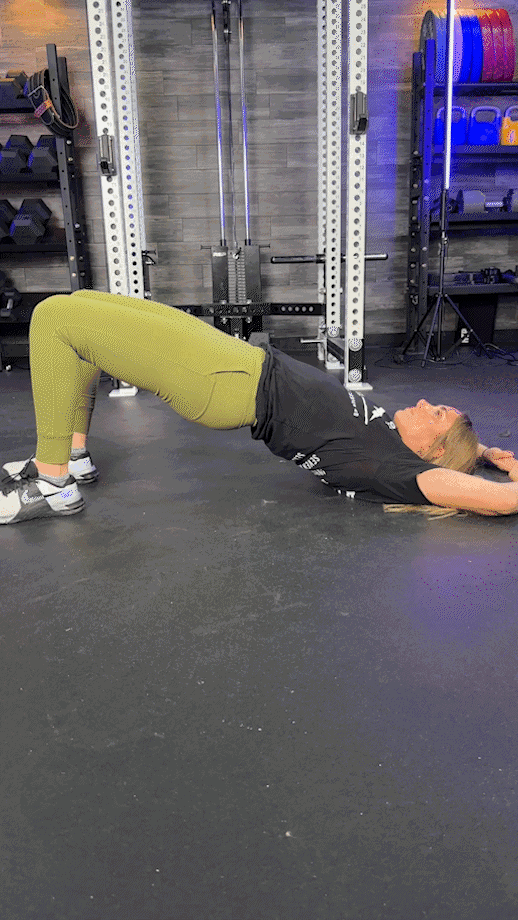
Lying Pelvic Tilts
Why do it: Lying pelvic tilts can help you establish awareness of your pelvic floor and abdominal muscles and help you understand how to position your pelvis for the best engagement.
How to do it:
- Begin by lying on the floor with your knees bent and feet planted flat on the floor.
- Start with your lower back in a neutral position and breathe in.
- You will then engage your pelvic floor and abdominal muscles by exhaling, pulling the pelvic floor up, and tilting your tailbone upward (toward your chin).
- Inhale again and let your pelvis and back return to the neutral starting position.
- Go slow and repeat for reps or time.
RELATED: Pelvic Tilt Exercises and Variations
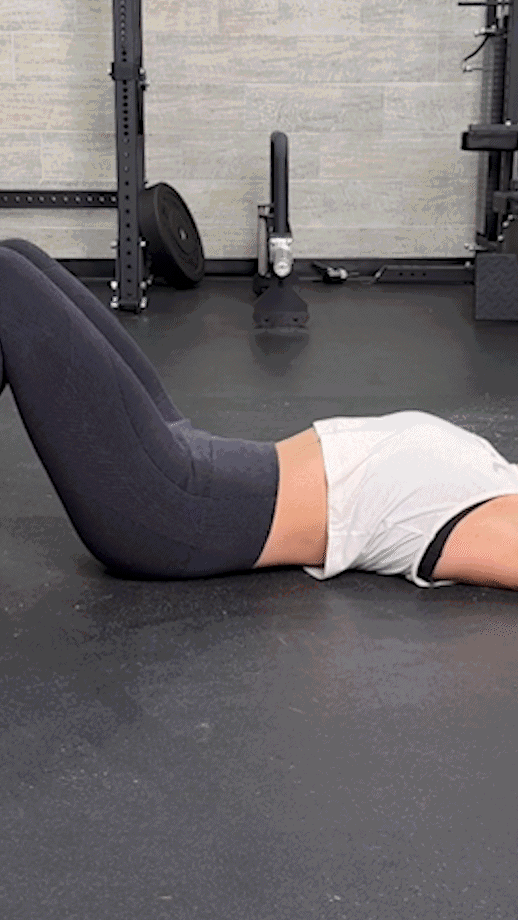
Heel Slides
Why do it: Heel slides offer an advancement from the lying pelvic tilt and can engage deep core muscles for additional strength and coordination.
How to do it:
- Begin in the lying pelvic tilt position from the step-by-step guide above.
- Instead of tilting in and out of the exercise, hold your pelvis tilted upward toward your chin.
- From this position exhale and engage your pelvic floor muscles, and extend one leg straight while dragging your heel on the floor.
- Inhale, release your pelvic floor and drag your knee back to the starting position.
- Alternate legs and repeat for repetitions.
Toe Taps
Why do it: Toe taps are an excellent way to coordinate the movement of one leg at a time while building deep core and pelvic muscles.
How to do it:
- Start by lying on your back with your knees bent and feet flat on the floor.
- With your arms at your sides, press your hands firmly into the floor.
- Bring your knees up so they are directly above your hips and bent at a 90-degree angle. Your shins should be parallel to the floor.
- Press your lower back into the floor and inhale into your belly. You’ll engage your core by exhaling and pulling the pelvic floor upward (aka Kegel or invision “zipping up”).
- Keep both legs bent at 90 degrees and lower one foot to tap the floor.
- Coordinate your exhale to time with lowering your left leg to the floor while it remains bent in the 90-degree position.
- Inhale and release the pelvic floor to bring your legs back together.
- Repeat with the right leg and time your exhale (and pelvic floor engagement) with the lowering of your leg.
- Inhale and release the pelvic floor. Repeat for repetitions.
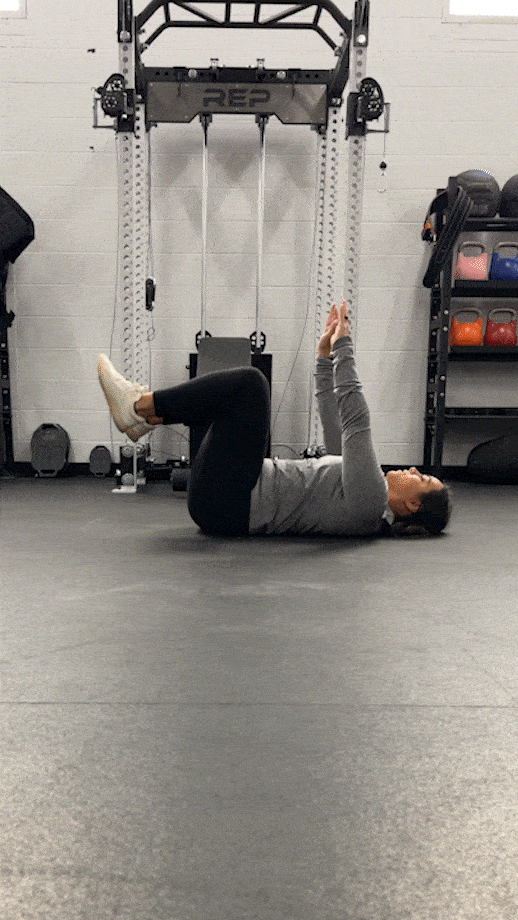
How To Relax Your Pelvic Floor Muscles
Fully relaxing the pelvic floor involves stretching the muscles around your groin, hips, glutes, abductors, and adductors. Those muscles may work overtime when the pelvic floor muscles are either weak or overactive and can’t relax.
Diaphragmatic breathing is also a major factor to relaxing the pelvic floor. When you want to focus on relaxing, instead of dumping out all of your air on your exhales and engaging the pelvic floor, practice exhaling without engaging into a Kegel and keep your belly soft on the inhales and exhales.
Pelvic Floor Stretches
You may notice most of the stretches featured below will open the legs wide and stretch the groin and abductors. Plan to keep your belly breathing soft and gentle when doing these stretches—there is no need to exhale all the way and engage your pelvic floor on these.
Child’s Pose
Why do it: Child’s pose is an ideal position to practice diaphragmatic breathing while in a gentle stretch for the hips and groin, which are often tight when dealing with pelvic floor dysfunction.
How to do it:
- Begin by getting into the quadruped position on your hands and knees.
- Slightly rotate your hips outward so they are wider than your hips and bring your big toes to touch.
- Walk your hands out, extending your arms until your forehead is resting on the floor.
- Allow your butt and hips to sink down toward your heels.
- Hold the pose for about 60 seconds while practicing your soft belly breathing.
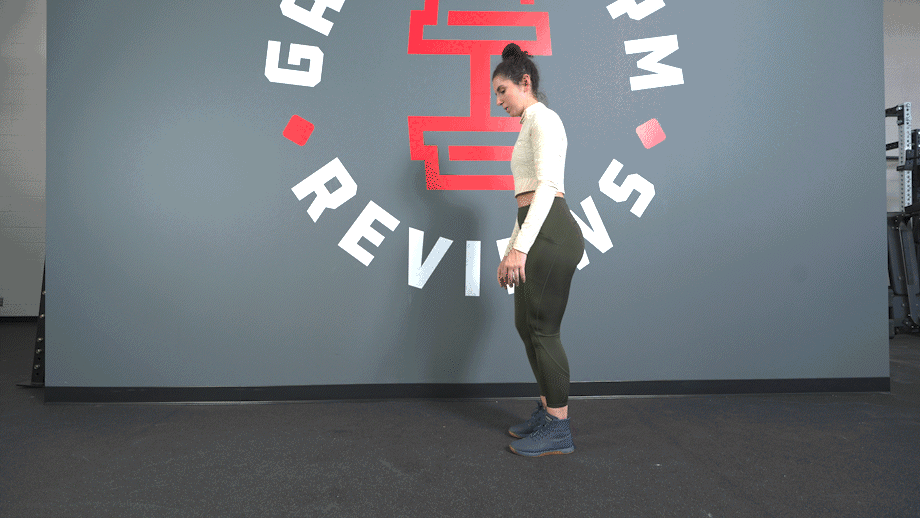
Happy Baby
Why do it: The happy baby pose allows you to stretch the abductors and groin muscles, which are often tight and overactive with weak pelvic floor muscles.
How to do it:
- Start by lying on your back with legs bent and feet flat on the floor.
- Lift your legs off the ground and bring your knees in toward your chest.
- Grab on to the outsides of your feet with your hands and let your knees fall outward.
- Relax your pelvic floor in practicing your soft belly breathing.
- Hold the stretch for about 60 seconds.
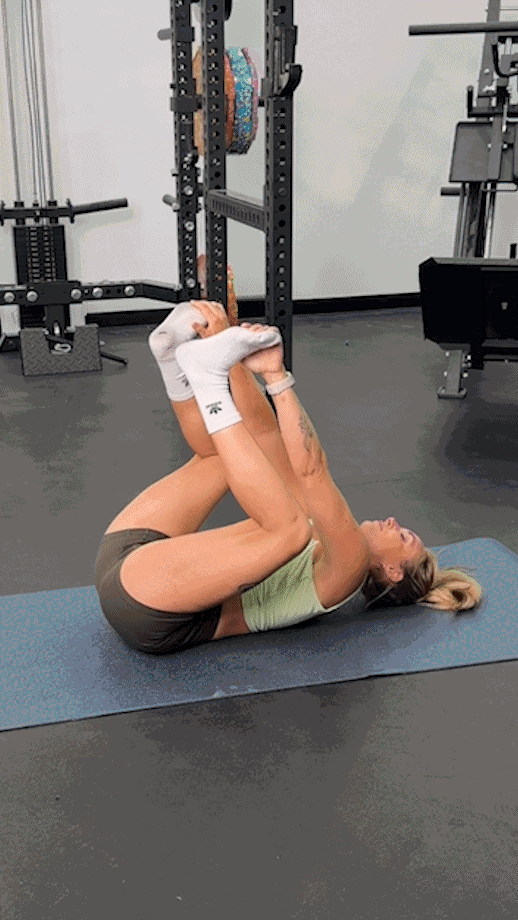
Frog Stretch
Why do it: Frog stretch is great for a deep stretch through the groin and inner thigh.
How to do it:
- Begin in a quadruped position on hands and knees.
- Slowly slide your knees apart as much as you can tolerate while keeping your legs bent at 90 degrees.
- Your ankles should be turned so that your arches are in contact with the floor.
- Gradually lower your hips toward the floor while keeping your chest parallel with the floor and your back straight. You should feel a stretch in your groin and inner thighs.
- You can rest on your forearms or stay on your hands, depending on your flexibility.
- Hold for 30 to 60 seconds while breathing deeply and relaxing into the stretch.
Knees to Chest
Why do it: The knees to chest pose works to help open the hips and stretch the lower back.
How to do it:
- Begin by lying on your back with your knees bent and feet on the floor.
- Slowly bend your knees and bring them toward your chest.
- Use both hands to gently grasp your knees or the backs of your thighs, depending on your mobility.
- Gently pull your knees closer to your chest until you feel a comfortable stretch in your lower back and hips.
- You can gently pull your legs apart for more stretching through the groin, adductors, and abductors.
- Hold the stretch for about 30 seconds, practicing your soft belly breathing.
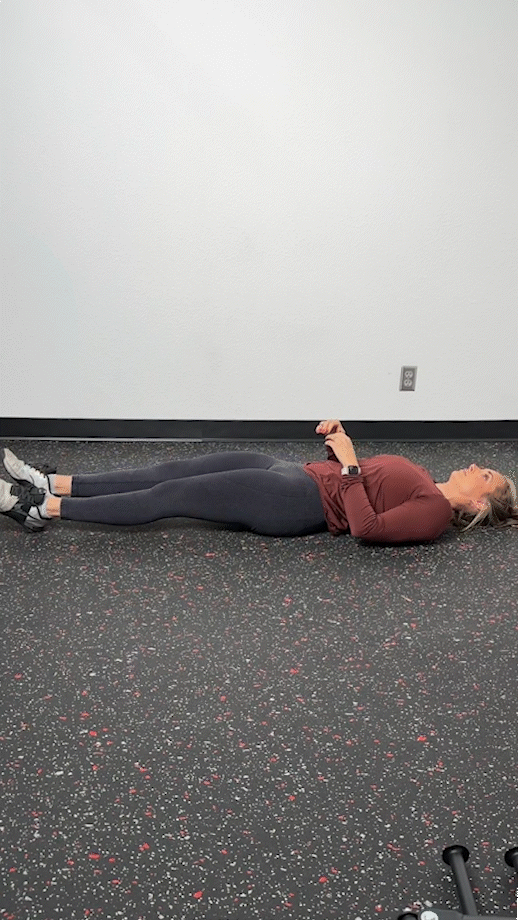
What Is Pelvic Floor Therapy?
Pelvic floor therapy is a form of physical therapy with a healthcare provider who specializes in the pelvic floor function. Working with a pelvic floor therapist can help you locate the pelvic floor muscles, coordinate breathing with the pelvic floor muscles, and help you to strengthen and fully relax the pelvic muscles.
Pelvic floor therapy may also include an internal exam, biofeedback to help locate pelvic muscles, lifestyle evaluation, and assistance with making behavioral or dietary changes.
As someone who has done pelvic floor therapy, I encourage you to seek professional help if you have feelings of heaviness in your pelvis, experience constipation or urinary retention, have painful urination or bowel movements, or experience urinary incontinence (or fecal leakage) from running or exercise, sneezing, or coughing.
RELATED: Guide to Running Postpartum
Other reasons to see a pelvic floor specialist include chronic abdominal or lower back pain, sexual dysfunction, painful intercourse, pain using a tampon, or tampons that dislodge or fall out.
If you’re not sure where to start looking for a pelvic floor therapist, the Academy of American Physical Therapy Association website allows you to search for specialists in your area.
Who Should Do Pelvic Floor Exercises?
As a CPT, I personally think everyone could benefit from pelvic floor exercises. But pelvic floor exercises are going to be the most helpful for folks who have pelvic pain, leakage, chronic constipation, or painful urination and bowel movements.

Additionally, pelvic floor therapy and exercises are important for:
- Pregnant and postpartum people
- People after prostate surgery
- Older folks who want to prevent pelvic organ prolapse
- People with urinary stress incontinence
- People with fecal incontinence
- Those who experience pain during vaginal sex
- Folks who want to improve sexual function and reduce the symptoms of erectile dysfunction
RELATED: Exercise During Pregnancy
Best Pelvic Floor Exercises: Final Thoughts
The best pelvic floor exercises are the ones that help you both strengthen and relax your pelvic floor through full range of motion. However, getting to a point where you can identify a muscle contraction and fully released muscle may take the help of your healthcare provider or a physical therapist who specializes in pelvic floor health.
If you experience pain in the pelvic area, have leakage or constipation issues, or have noticed general discomfort and dysfunction, don’t wait to start learning about the pelvic floor muscles and reach out to your doctor today.
Best Pelvic Floor Exercises: FAQs
Do squats strengthen the pelvic floor?
Once you get the basics of pelvic floor recruitment and diaphragmatic breathing, squats can help you advance your pelvic floor strength by coordinating abdominal bracing with exercise.
Do kegels work?
When you start your journey to strengthen your pelvic floor, the Kegel exercise is the foundation for engaging your pelvic floor and identifying the correct muscles. However, tightening is only one part of the pelvic floor rehabilitation—diaphragmatic breathing and learning how to fully relax and release tension in the pelvic floor is also necessary for optimal functionality of the pelvic muscles.
How long can it take to strengthen the pelvic floor?
The Cleveland Clinic4 estimates people typically feel results after six to eight weeks, however results vary depending on how consistent you are and how weak the pelvic floor muscles are to begin with.
Is it too late to strengthen my pelvic floor?
The best time to start identifying your pelvic floor muscles and strengthening them is today. While it’s never too late to start, you’ll need to consult your doctor or healthcare provider if you experience pain, are unsure if you’re doing exercises correctly, or think you’re facing pelvic organ prolapse.
References
- Kanter, G., Rogers, R. G., Pauls, R. N., Kammerer-Doak, D., & Thakar, R. (2015). A strong pelvic floor is associated with higher rates of sexual activity in women with pelvic floor disorders. International urogynecology journal, 26(7), 991–996. https://doi.org/10.1007/s00192-014-2583-7
- Kegel Exercises. Cleveland Clinic. Jan 2023.
- Grimes WR, Stratton M. Pelvic Floor Dysfunction. [Updated 2023 Jun 26]. In: StatPearls [Internet]. Treasure Island (FL): StatPearls Publishing; 2024 Jan-. Available from: https://www.ncbi.nlm.nih.gov/books/NBK559246/
- How to Get Help With Postpartum Pelvic Floor Pain. Bay State Health. Feb 23, 2023.



